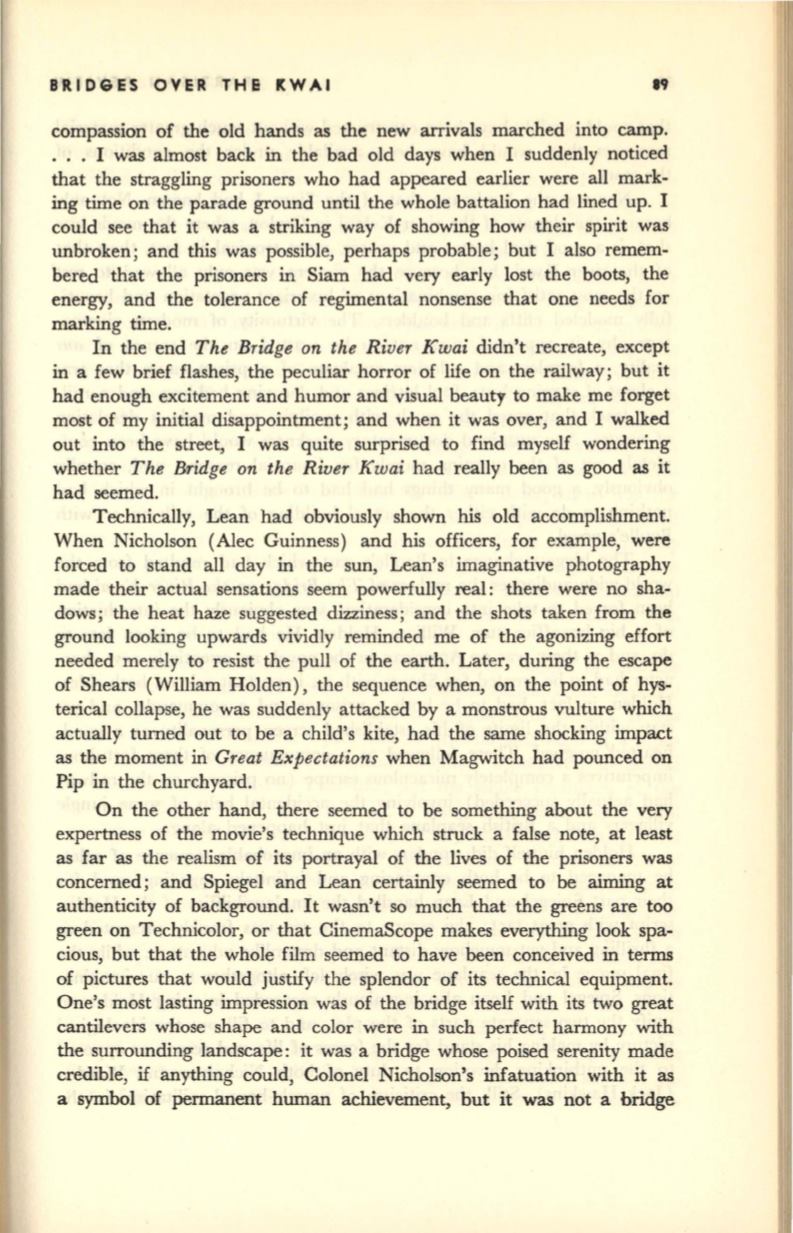
BRIDGES OVER THE !tWAI
"
compassion of the old hands as the new arrivals marched into camp.
. . . I was almost back in the bad old days when I suddenly noticed
that the straggling prisoners who had appeared earlier were all mark–
ing time on the parade ground until the whole battalion had lined up. I
could see that it was a striking way of showing how their spirit was
unbroken; and this was possible, perhaps probable; but I also remem–
bered that the prisoners in Siam had very early lost the boots, the
energy, and the tolerance of regimental nonsense that one needs for
marking time.
In the end
The Bridge on the River Kwai
didn't recreate, except
in a few brief flashes, the peculiar horror of life on the railway; but it
had enough excitement and humor and visual beauty to make me forget
most of my initial disappointment; and when it was over, and I walked
out into the street, I was quite surprised to find myself wondering
whether
The Bridge on the River Kwai
had really been as good as it
had seemed.
Technically, Lean had obviously shown his old accomplishment.
When Nicholson (Alec Guinness) and his officers, for example, were
forced to stand all day in the sun, Lean's imaginative photography
made their actual sensations seem powerfully real: there were no sha–
dows; the heat haze suggested dizziness; and the shots taken from the
ground looking upwards vividly reminded me of the agonizing effort
needed merely to resist the pull of the earth. Later, during the escape
of Shears (William Holden), the sequence when, on the point of hys–
terical collapse, he was suddenly attacked by a monstrous vulture which
actually turned out to be a child's kite, had the same shocking impact
as the moment in
Great Expectations
when Magwitch had pounced on
Pip in the churchyard.
On the other hand, there seemed to be something about the very
expertness of the movie's technique which struck a false note, at least
as far as the realism of its portrayal of the lives of the prisoners was
concerned; and Spiegel and Lean certainly seemed to be aiming at
authenticity of background. It wasn't so much that the greens are too
green on Technicolor, or that CinemaScope makes everything look spa–
cious, but that the whole film seemed to have been conceived in terms
of pictures that would justify the splendor of its technical equipment.
One's most lasting impression was of the bridge itself with its two great
cantilevers whose shape and color were in such perfect harmony with
the surrounding landscape: it was a bridge whose poised serenity made
credible, if anything could, Colonel Nicholson's infatuation with it as
a symbol of permanent human achievement, but it was not a bridge


